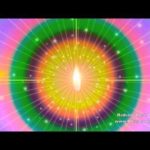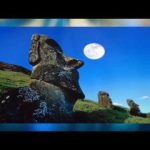Eyewitnesses to the JFK Assassination: Grassy Knoll (2013)
According to some assassination researchers, the grassy knoll was identified by the majority of witnesses as the area from where shots were fired.[45][108] In March 1965, Harold Feldman wrote that there were 121 witnesses to the assassination listed in the Warren Report, of whom 51 indicated that the shots that killed Kennedy came from the area of the grassy knoll, while 32 said the shots came from the Texas School Book Depository.[108] In 1967, Josiah Thompson examined the statements of 64 witnesses and found that 33 of them thought that the shots emanated from the grassy knoll.[109]
In 1966, Esquire magazine credited Feldman with “advanc[ing] the theory that there were two assassins: one on the grassy knoll and one in the Book Depository.”[110] Jim Marrs also wrote that the weight of evidence suggested shots came from both the grassy knoll and the Texas School Book Depository.[45]
Lee Bowers operated a railroad tower that overlooked the parking lot on the north side of the grassy knoll. He reported that he saw two men behind the picket fence at the top of the grassy knoll before the shooting. The men did not appear to be acting together and did not appear to be doing anything suspicious. After the shooting, Bowers said that one of the men remained behind the fence. Bowers said that he lost track of the second man whose clothing blended into the foliage. When interviewed by Mark Lane, Bowers noted that he saw something that attracted his attention, either a flash of light, or maybe smoke, from the knoll, leading him to believe “something out of the ordinary” had occurred there. Bowers told Lane he heard three shots, the last two in quick succession. Bowers opined that they could not have come from the same rifle.[111] Bowers later purportedly said to his supervisor, Olan Degaugh, that he saw a man in the parking lot throw what appeared to be a rifle into a car.[112]
William and Gayle Newman, two of the closest bystanders to the assassination, were standing at the curb on the north side of Elm St. with their two children. Mr. Newman was interviewed by Dallas television station WFAA-TV just twenty minutes after the assassination. He said that the fatal shot to Kennedy’s head was fired from directly behind him.[113]
Jesse Price was the building engineer for the Terminal Annex Building, located across from the Texas School Book Depository on the opposite side of Dealey Plaza. Price viewed the presidential motorcade from the Terminal Annex Building’s roof. In an interview with Mark Lane, Price said that he believed the shots came from “just behind the picket fence where it joins the underpass.”[114] He claimed to have seen a “…man run towards the passenger cars on the railroad siding after the volley of shots.”
The grassy knoll of Dealey Plaza is a small, sloping hill inside the plaza that became infamous following the assassination of John F. Kennedy. The knoll was above President Kennedy and to his right (west and north) during the assassination on November 22, 1963.
This north grassy knoll is bounded by the former Texas School Book Depository building along the Elm Street abutment side street to the northeast, Elm Street and a sidewalk to the south, a parking lot to the north and east and a railroad bridge atop the triple underpass convergence of Commerce, Main and Elm streets to the west.
Persistent Grassy Knoll theories stem also from studies of recorded police-radio transmissions, which contained sounds from Dealey Plaza in the moments during and after the assassination.
Because of persistent debate, answered and unanswered questions, and conspiracy theories surrounding the Kennedy assassination and the possible related role of the grassy knoll, the term “grassy knoll” has come to also be a modern slang expression indicating suspicion, conspiracy, or a cover-up.
Leave A Reply
You must be logged in to post a comment.









 Paranormal
Paranormal

